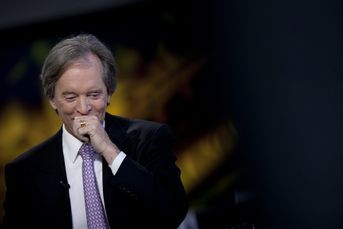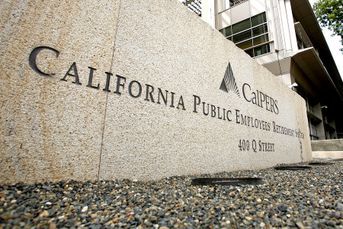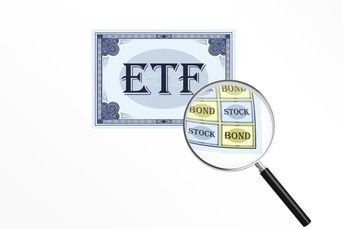ETF managers awaiting key SEC decisions on active funds
Rulings on transparency, structure of active funds could expand market.
The Securities and Exchange Commission is scheduled to make key decisions this month and next that could help expand the marketplace for active ETFs, paving the way for new offerings and expanding the number of money management firms offering products.
SEC rules now require exchange-traded funds to disclose their holdings daily, which has discouraged firms from offering active approaches.
The reason: concerns of front-running by investors able to take advantage of inside information and profit from the moves of ETF managers.
Those rules could change as soon as Oct. 24, the day the agency is expected to rule on allowing the New York Stock Exchange to offer the first non-transparent ETFs.
(Don’t miss this episode of ETF Exchange: What’s holding back the development of active ETFs?)
An affirmative decision by the SEC’s division of trading and markets would not be the final word on the NYSE listing 15 active ETFs by Precidian Investments. The SEC’s division of investment management also would need to provide exemptive relief, and that group does not have the same kind of deadline as the division of trading and markets, which was required to act under the Dodd-Frank Wall Street Reform and Consumer Protection Act.
The trading and markets division also is expected to rule Nov. 7 on a second proposal by the Nasdaq exchange to list ETFs by Navigate Fund Solutions, a subsidiary of money manager Eaton Vance Corp. Navigate is offering its own version of active non-transparent ETFs, called exchange-traded managed funds.
A positive decision by the division on trading and markets on either or both proposals would be “a major vote of confidence,” toward allowing non-standard active ETFs to be introduced, said Bob Goldsborough, an ETF analyst at Morningstar Inc.
“Should one or more of these proposed structures get the go-ahead from the SEC, we anticipate that the active ETF floodgates could open, and far more traditional fund managers may subsequently seek to roll out their strategies in relatively low-cost, tax-efficient ETF wrappers,” he said.
Reggie Browne, a senior managing director and head of ETF trading at New York-based Cantor Fitzgerald, said he is optimistic the SEC will approve the new ETF structures.
He said the SEC has reached out to broad segments of the ETF community, including market makers, in recent months to get their comments on non-transparent ETFs, a signal the commission is seriously considering the new structures.
Of course, a negative decision or decisions could potentially put a halt, for now, to the expansion of active ETFs.
CHANCE TO COMPETE
For many money managers, an expanded active ETF marketplace would give firms a chance to compete for the first time in the ETF marketplace against the established giants — BlackRock Inc., State Street Global Advisors and Vanguard Inc.
Those three together control around 80% of the $1.88 trillion ETF market, said Deborah Fuhr, partner and co-founder of ETFGI, a London-based ETF research and consulting firm.
“Money management firms were not in a position where they could compete with the three firms,” she said.
But the active non-transparent marketplace is a whole new ballgame. BlackRock, SSgA and Vanguard’s dominance has been in passive ETFs. In fact, the entire active market today accounts for only around 1% of the total ETF market.
CARVE A NICHE
Ms. Fuhr declined to name firms but said some managers believe they now can carve a niche for themselves with active products. Others are considering entering the market as a defensive mode, attempting to have their toes in the water in case non-transparent active ETFs gain traction.
In any case, BlackRock and SSgA aren’t resting on their laurels. They are proposing their own non-transparent active ETFs to add to their current lineup of mostly passive products.
BlackRock’s efforts date to September 2011, when it filed with the SEC for permission to offer U.S large-cap and midcap growth, value and long/short non-transparent active ETFs. The application with the SEC’s division of investment management has yet to be approved.
BlackRock is proposing to list its offerings on the BATS Global Markets exchange, which has asked the SEC division of trading and markets group to approve the listings. That decision is expected in April.
BlackRock has introduced six active transparent ETFs in the last three years in the U.S. Combined they have assets of $523 million, out of the money manager’s total ETF AUM of $711 billion.
SSgA has proposed three non-transparent ETFs, two equity and one fixed income. Assets in the ETF industry have grown at a rate of 25% a year, said David Mazza, vice president of State Street Global Advisors in Boston and the head of research for its SPDR exchange-traded funds and SSgA funds. (Morningstar data show a 27.34% annualized growth rate for the 10 years ended Dec 31, 2013).
“We are confident it will continue to grow and it might be driven by new approaches,” he said.
But Mr. Mazza said it’s unclear if active ETFs will be embraced by investors. Even then, new offerings will need a three-year track record to garner significant assets.
“Otherwise they (investors) are buying on faith,” he said.
EXEMPTIVE RELIEF SOUGHT
The third major player, Vanguard, initially filed two exemptive relief applications with the SEC to launch non-transparent ETF as a share class of its actively managed mutual funds in 2007, but amended the application in 2009 to be fully transparent. Vanguard decided to stop pursing approval in 2012, said company spokesman David Hoffman.
But in March of this year, Vanguard filed with the SEC to enter the active space again, offering transparent active versions of its popular mutual funds.
Mr. Hoffman said company officials in their latest decision, “looked at the landscape,” determining the SEC had not approved any non-transparent ETFs so far and decided offering transparent active products could be a business that worked.
The latest major money manager to file with the SEC for exemptive relief is Fidelity Investments, which on Oct. 9 launched three actively managed fixed-income ETFs using the firm’s total bond, limited-term bond and corporate bond strategies.
Fidelity announced earlier this month that all proposed funds would list portfolio holdings with a 30-day time-lag.
The Fidelity proposal calls for its ETFs to have a daily tracking basket of securities that would closely track performance.
Mr. Browne said one major selling point for active ETFs most likely will be lower fees than mutual funds. He said that, conceivably, active ETF funds could be priced 25 basis points on average lower than a similar mutual fund, but the ETFs’ composition and marketplace competition could also affect pricing.
Around 40 active money managers have made formal filings with the SEC or have indicated plans for active non-transparent products, according to Mr. Browne.
“A lot of active money managers are waiting to see if the initial approvals come from the SEC so they can make their next step,” said Mr. Browne, referring to the pending Precidian and Navigate decisions.
He said that step would be aligning themselves with either Precidian or Navigate, both of which plan to offer their own products as well as sell their ETF structures to money managers.JOINING WITH PRECIDIAN
Some major money management firms already have lined themselves up with Precidian for active non-transparent ETFs.
Heavyweights BlackRock, SSgA and Invesco Power Shares, the fourth larger ETF firm, as well as smaller ETF player Cohen & Steers Inc. and Capital Group, which has no ETFs now, all have signed licensing contracts with Precidian.
Capital Group spokesman Tom Joyce said the company filed with the SEC in August for non-transparent ETFs to “further the dialogue with the Securities and Exchange Commission and to be prepared for any potential changes in the competitive landscape.”
Mr. Joyce added, “We have no plans to offer ETFs at this time and the SEC filings should not be seen as a commitment to launch ETFs.”
A source familiar with Precidian’s operations said the firm already is making plans to use its hoped-for approval by the SEC to enter into subadvisory relationships with other money managers.
He said one possibility is that Precidian would be the sponsor of the ETF, which could be marketed and distributed and subadvised by better-known money managers.
The same source said that would give money managers a first-to-market advantage, while giving Precidian licensing fees. Most investors would not know the Precidian name, he noted.
As part of its filing with the SEC, Precidian has proposed a blind trust structure, which would enable the ETF market maker or authorized participant to handle orders without disclosing security selections. The ETFs would offer the immediate intraday trading of an ETF with real-time pricing.
Mark Criscitello, a principal of Precidian, said company officials would not comment on the SEC approval process. He said the company is committed to offering consumers a choice beyond passive ETFs.
The filing from Eaton Vance’s Navigate proposed that its exchange-traded managed funds also would not disclose daily holdings. Its funds would trade on an exchange, but pricing would not occur on a real-time basis. Instead, prices would be linked to the fund’s next-determined daily net asset value, similar to the way a mutual fund is priced.
Eaton Vance officials have said its structure will still offer advantages associated with ETFs, such as tax efficiency and lower fees than mutual funds.
Robyn Tice, a spokeswoman for Eaton Vance, said company officials would have no comment on the proposal before the SEC. But during a question-and-answer session after the company’s quarterly results were announced Aug. 20, company CEO and Chairman Thomas E. Faust Jr. touted the potential financial impact of the ETMFs.
“While we can’t predict the outcome of the regulatory process, we remain confident that, if approved, ETMFs have the potential to transform how actively managed strategies are delivered to fund investors in the U.S., with potentially quite significant financial implications for Eaton Vance,” said Mr. Faust, according to a transcript of the earnings call.
SMALL PORTION OF MARKET
The active ETF market today, made up of entirely of transparent ETFs with most of them investing in fixed income, amounts to only $17.66 billion of the $1.88 trillion ETF market, according to data from Morningstar.
Of the 1,660 ETF products of any asset class, only 110 are active. And around 40% of active ETF assets are in just two ETFs, the Pimco Enhanced Short Maturity Exchange-Traded Fund and the Pimco Total Return Exchange-Traded Fund, which was managed by William H. Gross until his recent departure from Pacific Investment Management Co.
Mr. Browne said he believes adding active non-transparent products to the mix could help make those products 10% of the total ETF market in five to 10 years. But that is dependent on investor acceptance of the strategies.
(Randy Diamond is a reporter at sister publication Pensions & Investments.)
Learn more about reprints and licensing for this article.






